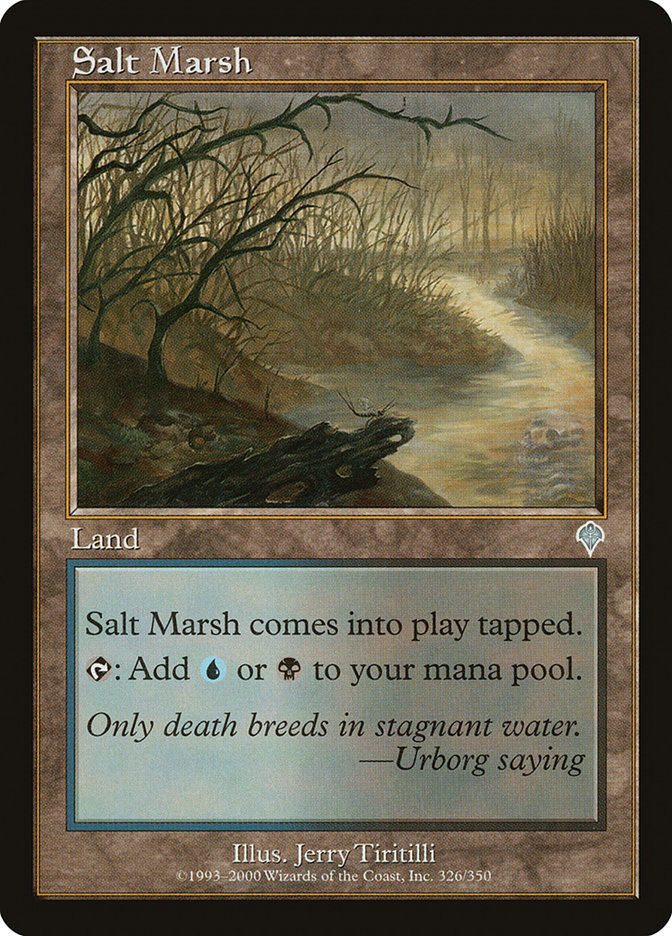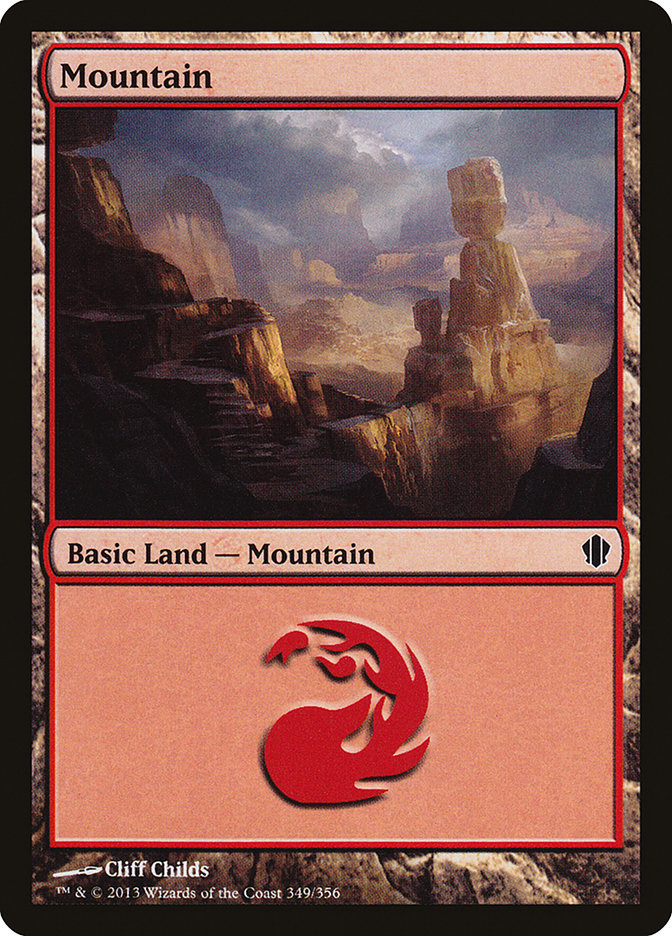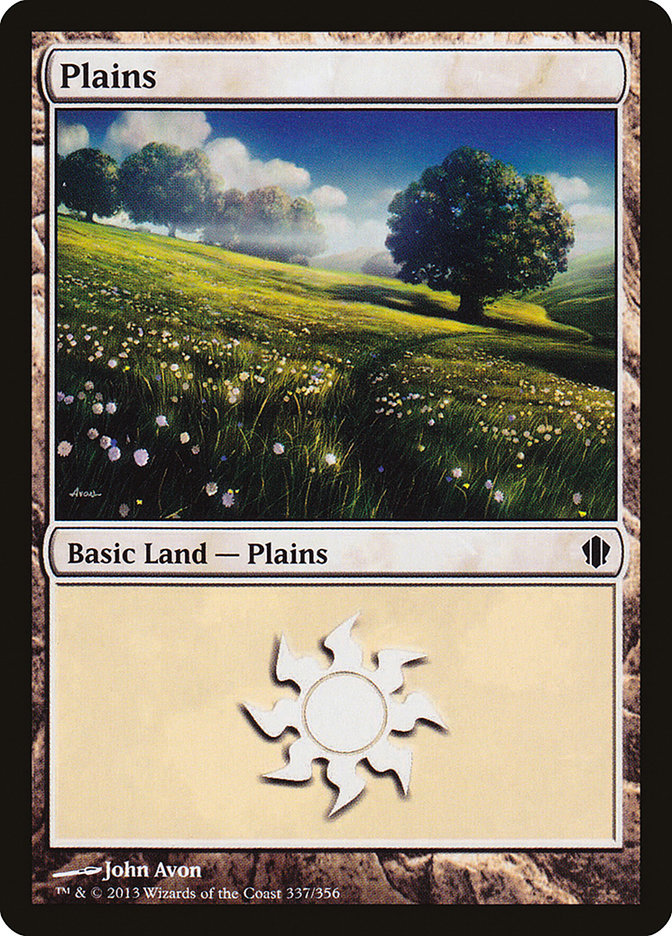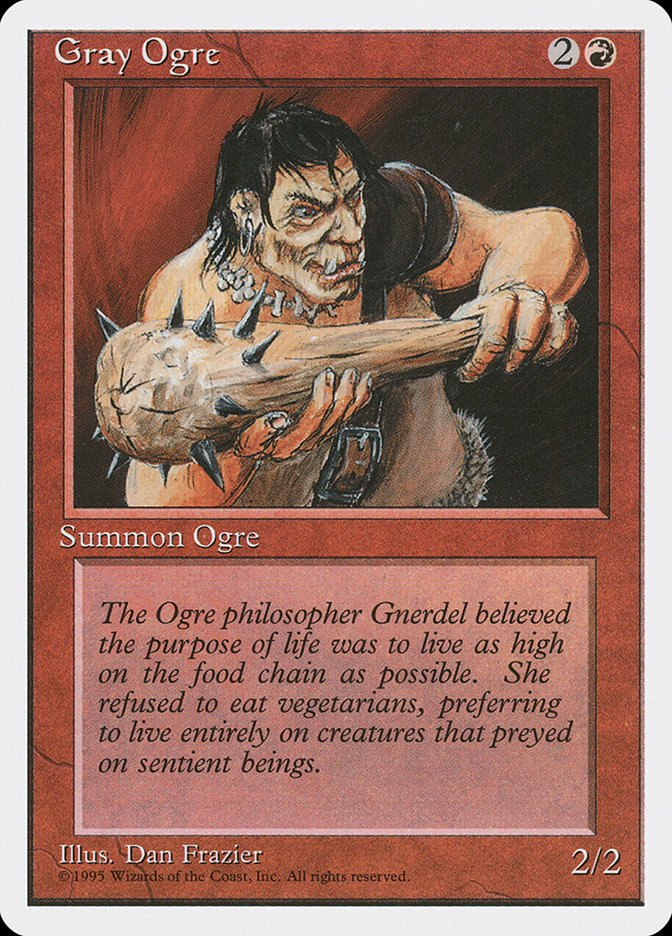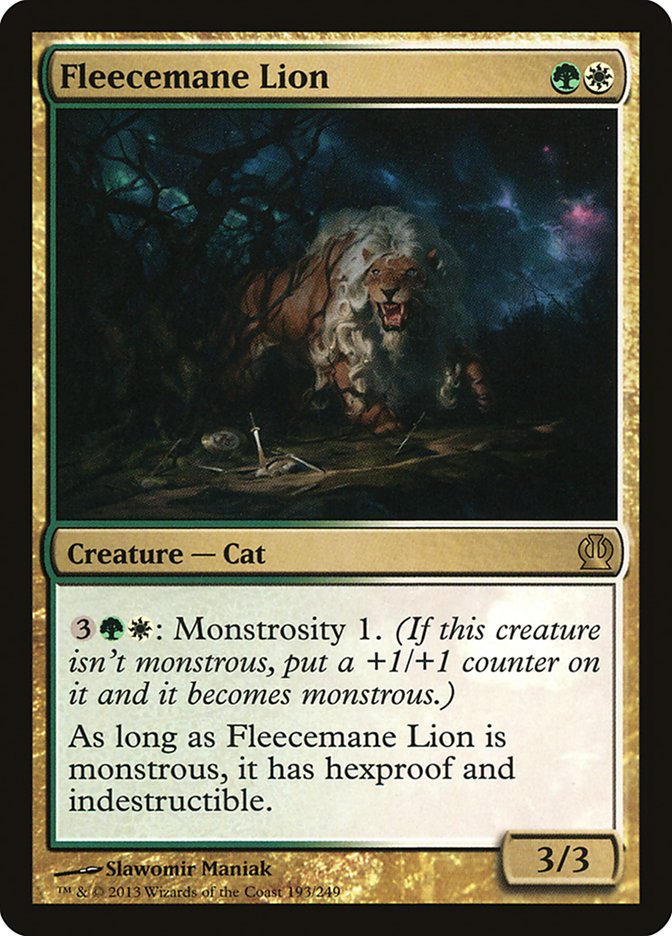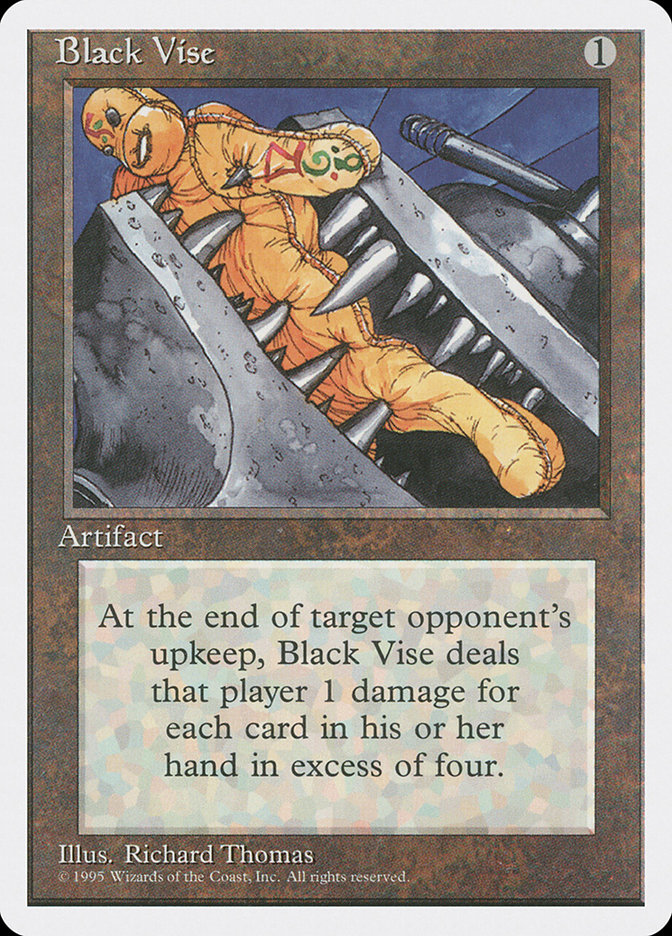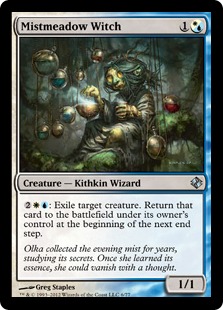Over the past week I have been getting a ton of requests and questions about my Danger Room / Battlebox casual format. Earlier in the week, Magic Hall of
Famer Ben Stark raved about the format in an online podcast, and since then, this mysterious format has sparked the curiosity of Magic fans worldwide.
When the best limited player of all time comes out and says, straight up, that a casual limited format is “better than cube draft,” it tends to get the
attention of the community.
In the interview, Ben referred to the format as “Battlebox” whereas I have always called it “The Danger Room” (referencing the X-Men training program),
however the two names are basically interchangeable and describe the same format.
When I designed The Danger Room, I wanted to create a format that accomplished a few specific agendas: Firstly, I wanted to eliminate the kinds of variance
that really ruin games of Magic. Specifically I wanted to take the annoyance of “mana screw” and “mana flood” out of the equation all together.
In my “about the author” profile for my articles, I say that creating The Danger Room is my biggest accomplishment in Magic, and I certainly stand by that
statement – it is the Magic-related accomplishment that I am most proud of.
I have a feeling that roughly 25% of games are decided by a player drawing too few lands, 25% of games are decided by a player drawing too many lands, 25%
of games are decided by a player having a legitimate bomb not get answered immediately, and the last 25% of games are the ones that everybody hopes for
where there is a ton of back-and-forth on both sides. I wanted to create a format that eliminated those unpleasant 75% of games that are unfulfilling and
foster a format where ALL of the games were as interactive as possible.
In the ultimate scheme of things it may not be 25%, 25%, 25%, 25% for each of these categories, but the general sentiment remains the same: mana screw and
mana flood are lame.
Enter the Danger Room land system:
Ten lands to cast them all.
Each player starts the game with a set of these specific ten lands set aside from the game in what I call “The Danger Zone.” A player may choose to play
one of these lands of their choice onto the battlefield during their main phase. This essentially means that each player gets to hit their first ten land
drops in a row with one of each basic (comes into play untapped) land and five (comes into play tapped) allied dual lands.
To further ensure that the parity of mana production remains equal throughout the course of the game, I strongly advocate the exclusion of any cards that
produce extra mana or destroy opposing lands. By adhering to this rule, all players will have access to equal mana production at every single point in the
game which eliminates the variance of “good” or “bad” mana from the outcome of a game.
Curving out with ten land drops in a row is pretty sweet, but the fact that a player is capped at ten mana is also a pretty interesting twist. While ten
may seem like a ton of lands to get into play late in the game, players can’t produce more than ten mana in a single turn which limits how much they can do
on any given turn.
Another cool factoid is that between the old card-face Invasion cycle, white-bordered 8th Ed. Reprints, Coldsnap tapped land cycle, and Guildgates (not to
mention foil and not-foil), there are a ton of different sets of lands to collect to make different sets. I find it handy to have different sets of basics
and tapped-lands so it’s easy to separate and pass them out at the start of the game. Also, save yourself some trouble, and put the Danger Room lands into
different color sleeves than the big deck to save from having to dig through the deck to find them when somebody inevitably and unintentionally shuffles
them into the big deck at the end of a game!
So, what do we do with this admittedly democratic mana system?
The rest of the game is played by drawing cards from a big deck of shared cards and casting them with the lands that players put into play from the “Danger
Zone.”
My shared deck tends to run somewhere between 600 and 700 cards (I am constantly adding, subtracting, and tuning it for the best possible play experience
the same way an avid cube drafter/collector would).
I have cards of every color, card type (excluding planeswalkers), and mana cost in my big deck and I try really hard to achieve a sort of balance of power
level among my spells. In a Standard game of Danger Room, players draw their hand from the center deck and play their lands from outside the game. Since
players are drawing from the same deck, any card can go to anyone so it’s important that the power level of the cards is fairly consistent.
My goal when I’m tuning my stack is that I don’t want players to complain about “I lost because you drew better cards than me.” I prefer to try and manage
my cards so that they are all in a similar realm of power level so that decisions and plays dictate the outcome of games as opposed to one player drawing a
bunch of cards that are individually clearly better than his or her opponent.
Here are my house rules for Danger Room / Battlebox:
Each player starts with six cards in hand
and the player who goes first doesn’t draw during his or her first draw step.
Players have a maximum hand size of nine
. The reason for this is that since players don’t play land cards from their hand (and instead play lands from the Danger Zone) it can sometimes be
challenging to get cards out of hand in the early stages of the game. The one specific scenario that I wanted to eliminate was to punish the player who was
on the draw by having to discard if they didn’t have a 1, 2, or 3 drop play in the first turns.
Players start with 20 life.
Starting life total is, of course, up to the discretion of the players. I have certainly played games with all sorts of different life totals, but 20 life
is the standard and everybody is familiar with it.
Each player draws 1 card per turn from the shared Big Deck during their draw step.
In Ben Stark’s interview, he said that they changed a few things around in order to make the game more suitable for the kinds of games they wanted to play.
I’m totally all for these kinds of personalized innovation that help mold game play to whatever players want. Ben said that when he plays with people, he
knocks the starting hand size down to four cards per player.
Finding the perfect starting hand size for your own stack is a product of the power level of the cards that you put in your big deck. With the Danger Room
everything is about crafting the kind of limited play experience that you and your friends enjoy playing!
HOW DO I BUILD MY OWN BIG DECK?
Tuning and creating a fun and playable Big Deck is a labor of love based on trial and error much in the same way that tuning a cube can be.
The overall key objective to creating the best play experience (at least in my opinion) is to have a card pool that is relatively balanced in power level.
For instance, if two players are in a topdeck war and both players draw 3cc creatures, the goal should be that both creatures are on the same relative
power level.
Not all 3 drops are created equally…
If my opponent draws a Gray Ogre and I draw a Troll Ascetic, the very fact that the cards in my deck are poorly balanced with regard to their general power
level has created a feel bad situation.
It is certainly fine to play with Gray Ogre in your big stack, and it is certainly fine to play with Troll Ascetic in your big stack as well. The key is
that whichever level of cards you choose to use, make sure that all cards are fairly close in power level.
The general criteria that I use when building my Danger Room is that I want the vast majority of my cards to be at, or around, the power level of an
Uncommon that I would be very happy to first pick in a booster draft.
I try not to play with cards that are windmill slam-worthy Mythic Rares that will outright end games all by themselves. I also don’t want cards that are so
tame that most of the time the people playing will end up wishing they had drawn any other card.
Also, keep in mind that mana cost makes a huge difference in this format and that cards that cost less are very useful. Four and five drops are obviously
going to be more powerful than two drops (because they cost twice as much to play!). A good way to think about balancing cards is to balance them at each
mana cost.
For instance, my benchmark for a two-drop creature is a Ravnica or Return to Ravnica Guildmage. I want all of my two drop creatures to be in the ball park
power level of a 2/2 or 2/1 creature with an additional ability. That doesn’t mean that every two drop creature must be a 2/2: For instance, I also have
Watchwolf which is a 2cc 3/3 creature. The larger size makes up for the ability.
Some cards simply push too hard:
I’d be lion if I told you this card was balanced in my Big Deck.
Fleecemane Lion was simply too powerful for my stack because it was head-and-shoulders a better card than my other two drop creatures. If Nivix Guildmage
and Watchwolf are on a generally similar power level, playing with a creature that is Watchwolf with an absurd gamebreaking ability is probably not
balanced.
By all means, be creative when you are putting together a deck, but the key is to watch for those specific cards that always seem to win the game or tilt
the game one way when they get drawn.
Here are a few notable cards that I had to cut from my deck (despite liking the cards a lot!) because they were simply too game warping:
It was too hard too kill and nigh unbeatable with equipment.
A cool card that I have a lot of nostalgic love for, but was actually a lot less fun in practice than in theory.
Games would completely revolve around this card and the witch would always win.
Was actually just unbeatable.
I also don’t play with planeswalkers in my stack because I’ve found them to be too game dominating. It makes perfect sense within the power level that I
hope to achieve which is “top tier uncommons,” as most planeswalkers tend to be beyond that power level.
My stack is very much personalized to suit the kinds of games and kinds of cards that my friends and I enjoy playing with. For instance, most of the cards
in my deck are ones that have, in some way shape or form, found themselves into decks I’ve built over the years or have fond memories of drafting in the
past. I play with cards that I like and cards that my friends like and would encourage everybody to do the same.
One thing I do advise is to play with a relatively equal number of cards of each color in your deck. One thing I noticed early on, before I balanced the
number of cards of each color, was that certain dual lands were actually much better (and got played consistently earlier most of the time) than others.
For instance, if your starting hand dictated that you needed to play the Shivan Oasis early because of the cards in your hand, it became detrimental over
the course of the game because there were more white and blue cards in the stack. Not good.
It doesn’t have to be the exact number of cards of every color and every multi color combination, but it should be relatively close. My deck tends to run
within five or six cards between the color with the most cards and the color with the least cards (which is nominal in a 650 card deck).
One last note on deck building: in my games we play off the same deck so I don’t include any cards that manipulate the top of the library. I really like
the random element of every single card is an unknown mystery card and so I don’t use any cards that tutor for cards in the big deck or stack the deck in
any way.
WHY IS DANGER ROOM SPECIAL (AS OPPOSED TO CUBE)
?
When BenS was talking about The Danger Room style format, he said straight up that he prefers to play this format to Cube Drafting and I definitely agree
with that statement. It isn’t that I don’t like to Cube Draft (I love Cube drafting), I simply prefer to play this format given the choice.
One of the great things about Danger Rooming or Battle Boxing is that it takes zero time to prepare and set up. You simply pull out the box grab ten lands
and you are immediately able to play. The fact that you don’t need to actually draft before you can get down to the business of playing is a terrific boon,
especially for a casual format that you can play in between rounds of a tournament to stay focused.
The other aspect that I like about the Danger Room is that once you have a stack that you feel is pretty good and balanced to play with, the only skill
emphasis you need to worry about is making good Magic plays. Everything about DR is about evaluating a board state and making plays based upon the
information you have and what is going on with the board. You don’t need to worry about drafting a curve, or making your mana work, or whether or not you
should keep a hand or mulligan.
That isn’t to say that using your mana efficiently isn’t important, because that skill is extremely important. The order that one plays their lands (in
particular which tapped lands get played and in which order) is of the most dire importance. In order to generate two mana of the same color, for instance
BB or WW, you must first have played a tapped land into play at some point in the game. So, setting yourself up to have the correct combinations of colors
later in the game is certainly a skill that carries a lot of weight in this format.
The other thing that is pretty special about this format is that it really challenges a player’s ability to evaluate a board state and make good decisions.
Since you draw a spell every turn of the game players don’t flood out or run out of gas, which means that you and your opponent will likely have multiple
possible plays to make every single turn.
“Should I kill their creature with a removal spell or play a creature of my own?”
It is very common to arrive at a situation on the forth or fifth turn of the game where a player may have 4, 5, 6 or more reasonable options available to
them! There is no other format that I have ever played with Magic cards that affords that kind of flexibility and gives players that many options
for how they want to play the game.
DEMARS’ DANGER ROOM DECK
ARTIFACTS -41
Tawno’s Coffin
3 OR MORE COLORS – 25
GOLGARI, BG – 13
IZZET, UR – 12
BOROS, RW – 10
SIMIC, UG – 13
ORZHOV, BW – 11
GRUUL, RG – 12
RAKDOS, BR – 9
SELESNYA, GW – 15
DIMIR, UB – 11
AZORIOUS, UW – 8
WHITE – 71
BLACK – 71
Hymn To Tourach
RED – 70
Blind With Anger
Two-headed Giant of Foriys
Disintigrate
GREEN – 71
BLUE – 71
Looter il-kor
Man’o’War
MULTIPLAYER VARIATIONS ON DANGER ROOM
TWO-HEADED GIANT
If you are a fan of 2HG, The Danger Room was basically tailor made for you. Since there is a shared library, the awkward decking factor doesn’t matter
(which is great in my opinion) and since the cards are relatively balanced and useful the games are extremely interactive.
Every single 2HG game I’ve played with the Danger Room was about a zillion times better than any I’ve played in limited.
DRAFT IT
Shuffle the main deck cards into packs and draft it like you would a regular Cube.
You have some options:
The first is to just draft whatever cards you want and use the Danger Room “Danger Zone” mana system.
The other is to actually distribute all of the Guildgate Lands into the draft packs so that they are legitimate picks and then have players actually add
the Guildgates and Basic Lands to their decks the way one would in a normal cube draft. In an 8 player draft, I would add 20 Guildgates (2 of each) to the
packs. You could technically add whatever types of duals or nonbasics that you wanted.
Personally, I really like to Rochester Draft the Danger Room and play with the Danger Zone mana system in a big multi-player game. It is super interesting
to see which cards your friends pick to add to their decks in a format where there is straight up equal resources!
One of the other awesome ways to play Danger Room is simply a multi-player free-for-all style game. Playing that way is what I always wished multi-player
Commander games were like. Everybody has equal resources and is trying to create advantages, but nobody is ramping and going over the top and nobody is
just trying to combo out!
It is pretty freaking sweet!
I hope you all enjoyed this extensive primer on my favorite casual format and that some of you actually throw together a big deck and try it out. Remember,
that as long as the cards are reasonable and cards you like to play with that it will be fun. I’m actually in the process right now of building a second
Danger Room full of draft cards that are on a lower power-level and all commons.
My second Danger Room is going to focus more heavily on combat tricks and aggressive strategies instead of the more defensive, grindy, and card advantage
oriented Danger Room that I currently have together.
I’m always interested in hearing about sweet cards that I may have overlooked for my Danger Room. I literally found a Power Matrix in a box of old junk,
added it, and am loving playing with it! I’m sure that some of you readers can probably think of some sweet ones. Any thoughts?



